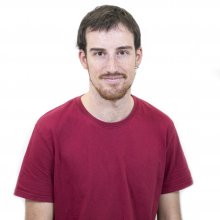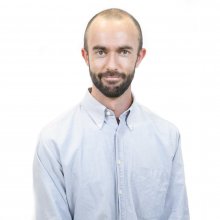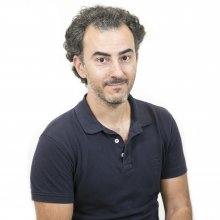Images
Participants






Contact

The team headed by Núria López-Bigas has published an article in Cell about what might have favoured the periodicity of certain base pairs in the genomes of eukaryotic organisms.
The structure adopted by DNA when packaged inside cells influences the periodicity observed.
Scientists at the Institute for Research in Biomedicine (IRB Barcelona) have found an explanation for a periodicity in the sequence of the genomes of all eukaryotes, from yeast to humans. The results published in the journal Cell offer an alternative explanation to the one based on natural selection, which has been accepted by the scientific community to date.
The researchers demonstrate that DNA damage and repair processes can play a role in the generation of sequence periodicity in the genomes of eukaryotic organisms. These processes are influenced by the orientation of the DNA structure when this molecule is packaged inside the cell nucleus, thus favouring a certain composition with a periodic nature in eukaryotic genomes.
"The answer we provide allows a better understanding of why our genome and that of other species have developed into what they are today," says Núria López-Bigas, head of the study and leader of the Biomedical Genomics lab at IRB Barcelona.
The “mysterious” periodicity of the genome
Since the sequence of the human genome and that of other organisms such as the mouse and fruit fly became known at the beginning of the 21st century, some researchers have noted a marked periodicity in the proportion of base pairs comprising adenine (A) and thymine (T). Indeed, the proportion of A/T pairs has been observed to be greater every 10 base pairs.
This periodicity has been associated with how DNA winds around nucleosomes (the simplest compaction form of DNA, in which it envelopes proteins called histones). The explanation given has been that natural selection would favour the appearance of A/T bases as these bases would provide the DNA structure with a greater degree of flexibility, thus allowing it to wind around histones to form nucleosomes.
Tumour mutations provide the key
By studying the distribution of mutations in more than 3,000 human tumours, the team at IRB Barcelona observed that the mutations also accumulated every 10 DNA base pairs.
"By examining mutation distribution along the genomes in regions in which we ruled out the presence of selection, we found a marked periodicity of 10 base pairs in the DNA that forms part of nucleosomes," explains Oriol Pich, PhD student and awardee of a fellowship from the Barcelona Institute of Science and Technology (BIST) and first author of the paper.
The periodicity of mutations occurs because the structure of the DNA packaged inside the nucleosome favours the appearance of regions that are prone to damage and to repair. Consequently, these regions are more susceptible to mutations.
Next, the researchers turned their attention to mutations that are passed from one generation to another, in both humans and plants. They found that these hereditary mutations also accumulated every 10 base pairs.
With this new discovery of how nucleosomes affect DNA mutations, the researchers deduced that it could also explain the development of the mysterious periodicity of the sequence of eukaryotic genomes.
Mutations over millions of years of evolution
The scientists at IRB Barcelona hypothesised that, as most mutations that we get are in cytosines (C) that convert into thymines (T), most of those regions most prone to mutating over millions of years have become A/T base pairs.
To test this notion, the researchers performed a mathematical simulation of genome evolution and demonstrated that the periodicity of the sequence of the human genome and that of other eukaryotes could have arisen from the periodic rate of mutations.
"We are really pleased to provide the scientific community with this alternative explanation regarding periodicity," say Oriol Pich and Núria López-Bigas, who highlight the importance of this kind of research. "It is basic knowledge derived from curiosity-driven research that allows us to achieve a better understanding of nature".
However, the results of the study are not only a breakthrough regarding current understanding of the human genome but they also explain how tumours acquire mutations. This knowledge is relevant for identifying mutations that are relevant for tumour development—another field of expertise of López-Bigas’ group.
This study is an example of how basic research can bring about new scientific knowledge. The work has been funded by the European Research Council, through a Consolidator grant" awarded to Núria López-Bigas, by the Ministry of Science, through ERDFs, and by the Catalan Government.
Reference article:
Oriol Pich, Ferran Muiños, Radhakrishnan Sabarinathan, Iker Reyes-Salazar, Abel Gonzalez-Perez, Nuria Lopez-Bigas
Cell (2018) doi: 10.1016/j.cell.2018.10.004
________
Vídeo Meet Our Scientists about the research conducted in Núria López-Bigas’ lab. “Looking for a needle in a haystack”: https://youtu.be/5_h9DS63PWo
About IRB Barcelona
The Institute for Research in Biomedicine (IRB Barcelona) pursues a society free of disease. To this end, it conducts multidisciplinary research of excellence to cure cancer and other diseases linked to ageing. It establishes technology transfer agreements with the pharmaceutical industry and major hospitals to bring research results closer to society, and organises a range of science outreach activities to engage the public in an open dialogue. IRB Barcelona is an international centre that hosts 400 researchers and more than 30 nationalities. Recognised as a Severo Ochoa Centre of Excellence since 2011, IRB Barcelona is a CERCA centre and member of the Barcelona Institute of Science and Technology (BIST).




